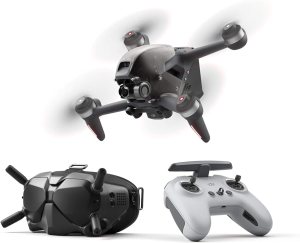Menu

Drones have transformed how we capture images, enjoy leisure, and conduct business. They come with a multitude of specifications that cater to different uses, such as hobbyist photography, commercial aerial surveillance, and entertainment. When selecting a drone, key factors include camera quality, battery life, range, ease of use, and price.
Here’s a comprehensive table comparing six different drones from NewEgg, Sharper Image, and Amazon, providing a snapshot of their varied capabilities and features:
| Feature | JJRC X6 Upgrade Aircus |
LED Dual Camera Drone CLICK HERE CLICK HERE |
Aero Stunt Drone by Sharper Image CLICK HERE CLICK HERE |
Amazon’s DJI Air 2S CLICK HERE CLICK HERE |
Amazon’s DJI FPV Combo CLICK HERE CLICK HERE |
Amazon’s Potensic ATOM SECLICK HERE CLICK HERE CLICK HERE |
| Price | $337.20 | $129.99 | $59.99 | $949.00 | $1,389.00 | $241.55 – $269.99 |
| Camera | 4K Wide Angle | Two high-def cameras | N/A | 5.4K Video | 4K Camera | 4K ShakeVanish Camera |
| Flight Time | Varies | Varies | Not Specified | 31 Mins | Not Specified | 62 Mins |
| Control Range | Not Specified | Varies | 150-ft. | 12km | Not Specified | 4km FPV Transmission |
| Size | Not Specified | Not Specified | Not Specified | Not Specified | Not Specified | Lightweight (< 249g) |
| Special Features | Two-Axis Self-Stabilizing | Illuminated LED rotors | Performs exciting stunts & fearless tricks | Obstacle Sensing | Super-Wide 150° FOV | GPS, Auto Return |
| User Level | All levels | All levels | All levels | Intermediate – Pro | Intermediate – Pro | Beginner – Intermediate |
The drone market offers a vast array of options. For those starting, Sharper Image’s Aero Stunt Drone provides an affordable entry point with basic features suitable for learning. Amazon’s selection caters to a broader range, with the DJI Air 2S for those serious about aerial photography, the DJI FPV for immersive flying experiences, and the Potensic ATOM SE for those who need extended flight times and advanced camera capabilities without breaking the bank. NewEgg provides a range of drones catering to recreational and professional needs. Your choice will depend on your budget, intended use, and the level of complexity you’re comfortable with.
Drones, once a technology reserved for military and specialized commercial applications, have now permeated the consumer market, becoming a popular tool for hobbyists and enthusiasts. The evolution of drone technology has been rapid and wide-ranging, impacting various sectors, from personal entertainment to warfare.
The hobbyist drone market has seen significant advancements, particularly in the miniaturization of components. Modern drones have high-definition cameras, advanced stabilization systems, and sophisticated flight control software. GPS integration has become standard, allowing for features such as automated flight paths, return-to-home functionality, and the ability to hold position even in windy conditions. Battery technology has also progressed, with lithium-polymer and lithium-ion batteries enabling longer flight times.
The user interface for controlling drones has become more user-friendly, with intuitive apps that can be used on smartphones and tablets, providing live video feeds and telemetry data. Some drones for hobbyists now feature obstacle detection and avoidance systems, which were once only found in commercial drones.
Commercial drones have evolved to perform highly efficient and accurate surveying, inspection, and mapping tasks. They carry specialized sensors, including thermal imaging and multispectral cameras, to gather data for agriculture, construction, and energy industries. Drones have also revolutionized delivery services, with companies experimenting with UAVs to transport goods to consumers quickly.
In agriculture, drones monitor crop health, analyze soil composition, and even assist in precisely applying fertilizers and pesticides. In the film industry, drones have replaced traditional filming equipment, providing a cost-effective means to capture aerial shots.
Military drones have undergone significant enhancements in stealth technology, endurance, and payload capacity. Unmanned Combat Aerial Vehicles (UCAVs) can now be deployed for extended periods, carrying out surveillance and targeted strikes without risking human life. These drones are integrated with advanced communication systems for real-time data transfer and are capable of autonomous decision-making to a certain extent.
Building a personal drone can be an engaging and educational experience for hobbyists interested in DIY projects. Here’s a brief overview of what it takes to build your own drone:
Building a drone also involves understanding regulations and safety concerns. In many countries, drone pilots must follow specific guidelines regarding where and how they can fly, especially if the drone is equipped with a camera.
In conclusion, the drone industry continues to advance technologically, with personal and commercial drones becoming more sophisticated and capable. The hobbyist community benefits from these developments, with access to high-tech features that enhance the flying experience. Whether for fun, professional use, or research, drones represent a convergence of multiple technologies that continue to evolve and expand their potential.